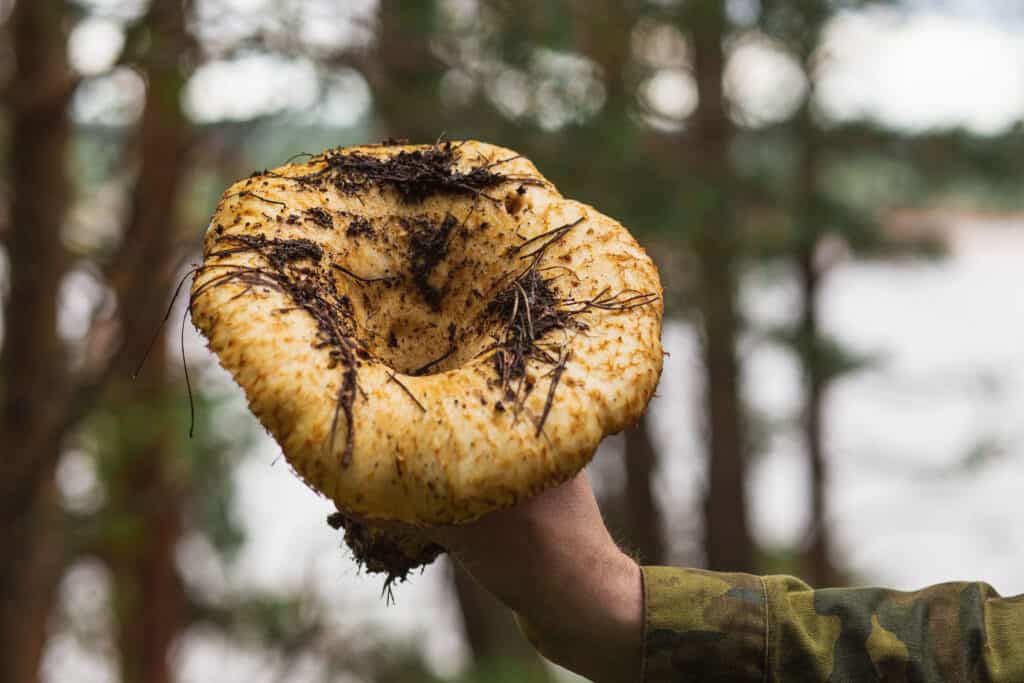
The largest mushroom ever grown is sometimes referred to as the Humongous Fungus, and it measures 3.7 square miles in area. That’s right, a single organism has reached a size larger than some small towns, essentially taking over a large portion of land in the Malheur National Forest in Oregon.
This mushroom belongs to the Armillaria ostoyae species. The genus is often referred to as honey fungi, and many of them have made the list of the largest fungi in the world. This particular fungus is a wood-decay fungus, so it breaks down wood in the forest. buy mushroom online usa
The Armillaria ostoyae species is known for spreading via rhizomorphs, growing at a pace of about one meter per year. These rhizomorphs are parallel hyphae, a rootlike filament that grows near the surface of the substrate. They look and act like roots to an extent. buy shrooms online usa
Not all members of this genus and species can grow this large. Scientists had to examine the mushroom’s genes to figure out what allowed it to grow its unique, expensive rhizomorphs. What they ground was that the plant can grow into living wood, kill the host tree, and then continue to feed on the dead wood.
This particular fungus in Oregon may be between 2,000 and 8,650 years old and sits on thousands of acres. Furthermore, the total mass of this living organism probably weighs hundreds of tons! The same DNA testing used to discover the unique qualities of this mushroom confirm that this is all one gigantic fungus!
Whether you’ve had to pry one out of your dog’s mouth while on a walk or exclaim with glee when you witness a “fairy circle”, the chances are that you have seen some mushrooms throughout your life. These fungi make a great pizza topping and serve an important role in the environment. The mushrooms most people are used to seeing are rather small, though. Today, we’re going to hunt down the largest mushroom ever grown.
Let us show you where it was grown, how large it got, and what type it was!
Are Mushrooms Considered Plants?

Mushrooms are not plants, they are fungi. These two organisms have several differences that separate them, despite a mushroom’s cap and stalk looking distinctly plant-like. Let’s take a look at how mushrooms and plants are different from one another.
First, plants can create their own food by photosynthesis, but mushrooms cannot. Instead, mushrooms digest matter in the soil with enzymes to thrive. Mushrooms are decomposers that will feast on a variety of things. Among them are dead plants, dead animals, and rotting fruit.
Other differences are less pronounced. Plants make food in the food chain and fungi break stuff down. They have different compounds in their cell walls, and they store their food differently.
For all these reasons and more, mushrooms are not considered plants even though they may share some qualities.
How Large Is an Average Mushroom?

Mushrooms are not like other living things that are easy to look at and gauge their size. After all, we’re asking what is the largest mushroom ever grown? We’re not asking what is the largest mushroom cap? The point that we must make here is that mushrooms are different than most living things because the bulk of their mass and interconnectivity lies below the soil.
When you imagine a plant’s total size, you may consider the flower, stem, and then the roots. The “roots” of a mushroom are called the mycelium. The mycelium grows as a collection of thread-like portions called hyphae. This is the true mass of the mushroom. The stem and cap that we see above ground is a short-lived, fast-growing portion of the fungi. It’s not the entire thing.
This is almost a contradiction to what we know about plants. But we have to remember that mushrooms and plants are different.
So, how large is the average mushroom? There is no way to answer the question because of the variations in place. We can tell you that a mushroom develops from a primordium, a structure that is less than two millimeters in diameter.
From there, the mycelium can rapidly grow or face limited growth depending on the available nourishment in the substrate. Mushroom masses can reach incredible sizes as you will soon see. However, they can also stay relatively small and rarely, if ever, produce a toadstool.




Leave a Reply